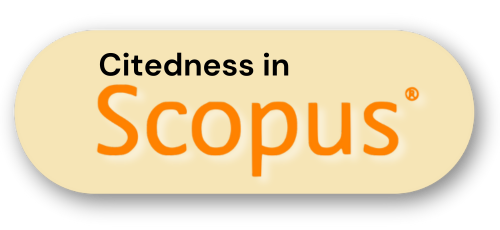Bilingual Education in Teaching English as A Foreign Language (EFL) in Indonesian University
DOI:
https://doi.org/10.61194/education.v1i1.33Keywords:
Bilingual approach, Teaching English, Indonesian universities, CLILAbstract
This paper concludes that the bilingual approach for teaching English in Indonesian universities is most effective, and the content and language integrated learning (CLIL) approach is particularly suitable. CLIL offers benefits such as the use of the first language to aid comprehension and identification of target language forms, connections to learners' previous knowledge, and improvements in self-confidence and motivation. Focused-form instruction (FFI) can be included in CLIL, which encourages attention to both meaning and language. The CLIL approach is therefore recommended for maximizing teaching effectiveness and learner benefits in the Indonesian university context.
References
Amerman Goerdt, L., Blaalid, B., Elswick, S. E., Johnson, D. H., Delavega, E., Kindle, P. A., & Granruth, L. B. (2019). Teaching Characteristics and Student Satisfaction: Impact on Social Work Students’ Interest in Policy. Journal of Social Work Education, 55(4), 767–776. https://doi.org/10.1080/10437797.2019.1611512
Bessa, C., Hastie, P., Rosado, A., & Mesquita, I. (2021). Sport education and traditional teaching: Influence on students’ empowerment and self-confidence in high school physical education classes. Sustainability (Switzerland), 13(2), 1–14. https://doi.org/10.3390/su13020578
Eddy, S. L. (2022). Recent Research in Science Teaching and Learning. CBE Life Sciences Education, 21(3). https://doi.org/10.1187/cbe.22-06-0128
Glas, K., & Cárdenas-Claros, M. S. (2013). New English cultures and learner autonomy for intrinsic motivation and democratic empowerment in the Chilean context. English Teaching, 12(3), 23–40. https://www.scopus.com/inward/record.uri?eid=2-s2.0-84890732925&partnerID=40&md5=e98cd1dc5d54abe730000c20b5abc485
Glisson, L. (2019). Breaking the spin cycle: Teaching complexity in the age of fake news. Portal, 19(3), 461–484. https://doi.org/10.1353/pla.2019.0027
Hazrati, H., Bigdeli, S., Arabshahi, S. K. S., Gavgani, V. Z., & Vahed, N. (2021). Visualization of clinical teaching citations using social network analysis. BMC Medical Education, 21(1). https://doi.org/10.1186/s12909-021-02643-6
Heinrichs, H. (2021). Teaching sustainable development in a sensory and artful way—Concepts, methods, and examples. Sustainability (Switzerland), 13(24). https://doi.org/10.3390/su132413619
Johnson, J. M., & Stern, T. A. (2014). Teaching residents about emotional intelligence and its impact on leadership. Academic Psychiatry, 38(4), 510–513. https://doi.org/10.1007/s40596-014-0048-4
Lane, A. K., Earl, B., Feola, S., Lewis, J. E., McAlpin, J. D., Mertens, K., Shadle, S. E., Skvoretz, J., Ziker, J. P., Stains, M., Couch, B. A., & Prevost, L. B. (2022). Context and content of teaching conversations: exploring how to promote sharing of innovative teaching knowledge between science faculty. International Journal of STEM Education, 9(1). https://doi.org/10.1186/s40594-022-00369-5
Liu, S. (2022). Construction and Computation of the College English Teaching Path in the Artificial Intelligence Teaching Environment. Computational Intelligence and Neuroscience, 2022. https://doi.org/10.1155/2022/3415999
Louis, V. N., & King, N. S. (2022). Emancipating STEM Education through Abolitionist Teaching: A Research-practice Partnership to Support Virtual Microteaching Experiences. Journal of Science Teacher Education, 33(2), 206–226. https://doi.org/10.1080/1046560X.2021.2012957
Makuru, B., & Jita, T. (2022). Information and Communication Technology Practices in Biology Teaching in Lesotho High Schools. International Journal of Information and Education Technology, 12(7), 668–677. https://doi.org/10.18178/ijiet.2022.12.7.1669
Martinez, M. A. (2022). What do people write about COVID-19 and teaching, publicly? Insulators and threats to newly habituated and institutionalized practices for instruction. PLoS ONE, 17(11 November). https://doi.org/10.1371/journal.pone.0276511
McGrath, G. M., Lockstone-Binney, L., Ong, F., Wilson-Evered, E., Blaer, M., & Whitelaw, P. (2020). Teaching sustainability in tourism education: a teaching simulation. Journal of Sustainable Tourism, 1–18. https://doi.org/10.1080/09669582.2020.1791892
Motitswe, J., & Mokhele, M. L. (2013a). Teaching and learning in the inclusive classroom: What foundation phase teachers do? Mediterranean Journal of Social Sciences, 4(6), 545–551. https://doi.org/10.5901/mjss.2013.v4n6p545
Motitswe, J., & Mokhele, M. L. (2013b). Teaching and learning in the inclusive classroom: What foundation phase teachers do? Mediterranean Journal of Social Sciences, 4(6), 545–551. https://doi.org/10.5901/mjss.2013.v4n6p545
Mousa, J. S. (2016). Effect of the Social Constructivist Approach on Teaching Reading to Jordanian University Students. US-China Education Review A, 6(5), 310–315. https://doi.org/10.17265/2161-623X/2016.05.005.
Ormiston, N. T. (2014). Transforming stories and teachings into social work pedagogies. Affilia - Journal of Women and Social Work, 29(3), 368–372. https://doi.org/10.1177/0886109914522630
Pineda, P., & Seidenschnur, T. (2021). The metrification of teaching: student evaluation of teaching in the United States, Germany and Colombia. Comparative Education, 57(3), 377–397. https://doi.org/10.1080/03050068.2021.1924447
Reilly, G. (2017). Teaching for justice in a contradictory world. Education Sciences, 7(1). https://doi.org/10.3390/educsci7010010
Rombach, M., Paul, S. E., Niedermann, L. F., & Bitsch, V. (2020). Peppers & More: A teaching case in organizational behavior. International Food and Agribusiness Management Review, 23(2), 313–318. https://doi.org/10.22434/IFAMR2020.0010
Saide, S., & Sheng, M. L. (2021). Knowledge exploration–exploitation and information technology: crisis management of teaching–learning scenario in the COVID-19 outbreak. Technology Analysis and Strategic Management, 33(8), 927–942. https://doi.org/10.1080/09537325.2020.1854714
Schiepe-Tiska, A., Heinle, A., Dümig, P., Reinhold, F., & Reiss, K. (2021). Achieving Multidimensional Educational Goals Through Standard-Oriented Teaching. An Application to STEM Education. Frontiers in Education, 6. https://doi.org/10.3389/feduc.2021.592165
Tov, W., Wirtz, D., Kushlev, K., Biswas-Diener, R., & Diener, E. (2022). Well-Being Science for Teaching and the General Public. Perspectives on Psychological Science, 17(5), 1452–1471. https://doi.org/10.1177/17456916211046946
Vassallo, S. (2013). Critical Pedagogy and Neoliberalism: Concerns with Teaching Self-Regulated Learning. Studies in Philosophy and Education, 32(6), 563–580. https://doi.org/10.1007/s11217-012-9337-0
Vernaudon, J. (2015). Linguistic ideologies: Teaching oceanic languages in French Polynesia and new Caledonia. Contemporary Pacific, 27(2), 433–462. https://doi.org/10.1353/cp.2015.0048
Wang, Y.-M., & Chiou, C.-C. (2022). Empirically Examining the Effectiveness of Teaching Blogs on University Course Instruction. SAGE Open, 12(3). https://doi.org/10.1177/21582440221104782
Xia, J. (2022). Discussion on Basic Japanese Teaching Mode in Multimedia Network Environment. Journal of Environmental and Public Health, 2022. https://doi.org/10.1155/2022/7797540
Xia, X., & Li, X. (2022). Artificial Intelligence for Higher Education Development and Teaching Skills. Wireless Communications and Mobile Computing, 2022. https://doi.org/10.1155/2022/7614337
Yuan, R., & Huang, D. (2021). Exploring the Organizational Resilience of A School-embedded Social Work Agency: A Teaching/learning Case Study. Human Service Organizations Management, Leadership and Governance, 45(5), 493–505. https://doi.org/10.1080/23303131.2021.1962471






